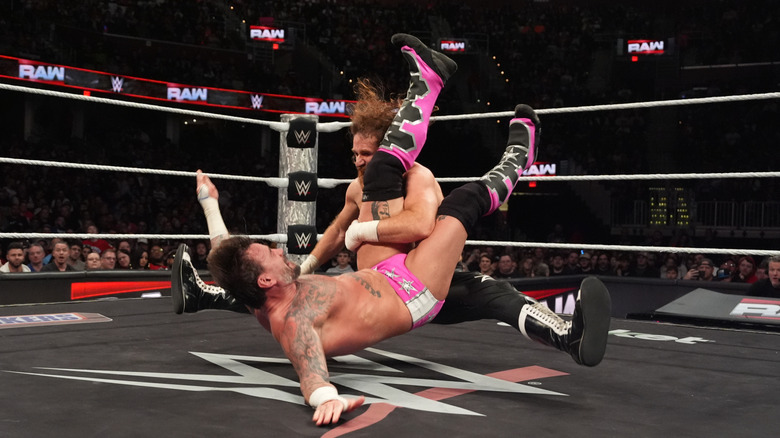ARTICLE AD
 



Wwe/Getty Images
Pinfall attempts. Unlike most wrestling moves or holds, it's not something most fans think about, even though they happen in every single match, submission, I Quit, or Last Man Standing matches notwithstanding, and frequently lead to the finish of said match. This is likely the combination of pinfalls being such a norm in pro wrestling, and the fact that it's a pinfall; it doesn't seem like there's much to talk about regarding using a cradle, rolling someone up, holding the shoulders down or hooking the leg. This being wrestling, a world with its own hidden signals and jargon, however, it should come as no surprise that there's hidden meaning in pinfall attempts, particularly ones involving the leg being hooked.
Even if one isn't thinking about pinfall attempts that much, it's likely they know all about "hooking the leg," arguably the most famous pinfall attempt that doesn't involve Undertaker putting his opponent's hands on his chest and sticking out his tongue. Whereas the "lateral press" cover, which generally is just a wrestler putting their body over their opponent, is seen as lackadaisical, hooking the leg is seen as the point where a wrestler is looking to get the W. That makes sense given the origins of the leg hook come from amateur wrestling, where hooking the leg puts the weight on the opponent's shoulder, making it easier to keep them down and score points. If it works amateur wrestling, why wouldn't it work in the pros as well?

Hooking The Leg Was A Point Of Contention Between 1980s WWE Stars And Gorilla Monsoon

 
In fact, hooking the leg was a key component to a WWE match during the 1980s, when wrestlers wouldn't hook the leg in the match's early goings. There was only one time where hooking the leg would play into the match; the end, when a wrestler did so to score the victory, barring their finish being a submission hold. Yes, much like the X sign became the signal for an injured wrestler, hooking the leg became the signal that the match was over. As a result, it also became a point of contention, as WWE announcer Gorilla Monsoon, aware of the practice, would often ridicule wrestlers who didn't hook the leg earlier in a match. Some wrestlers subsequently believed it killed the suspense and psychology of their matches, leading to wrestlers complaining about Monsoon to the likes of wrestling journalist Dave Meltzer.
Much like everything else, however, the art of hooking the leg has evolved as wrestling makes its way through the 21st century. This is to say that the practice now happens more than ever, and also that it no longer signals a match is ending. To be clear, hooking the leg can still get you a victory; some, like Dustin Rhodes, a product of the 1980s, still win matches with their own variation of it, with Rhodes hooking the leg, bobbing his head to count along with the count, and even turning his opponents on the mat to apply more pressure. Overall though, the leg hook is no longer the signal the match is ending, or the predominant way matches are won, with flash pins, lateral presses, and even lackadaisical covers (like draping a foot over an opponent) becoming more prominent. If nothing else, it's at least made match finishes more unpredictable, which would make Gorilla Monsoon proud.


 2 hours ago
3
2 hours ago
3 

